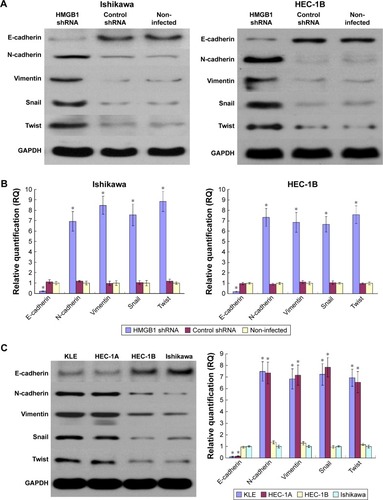Figures & data
Figure 1 HMGB1 expression in human endometrial tissues was assessed by IHC.
Abbreviations: HMGB1, high-mobility group box protein 1; IHC, immunohistochemistry.
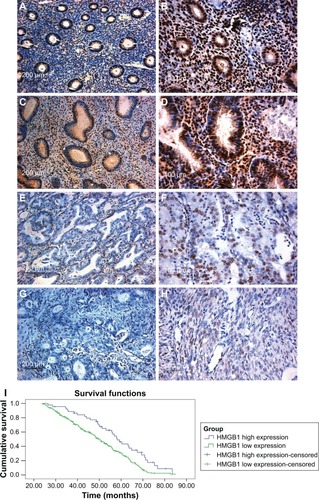
Table 1 HMGB1 protein expressions in human endometrial tissues
Figure 2 Acquisition of endometrial glandular epithelial cells and mesenchymal cells.
Abbreviation: ICC, immunocytochemistry.
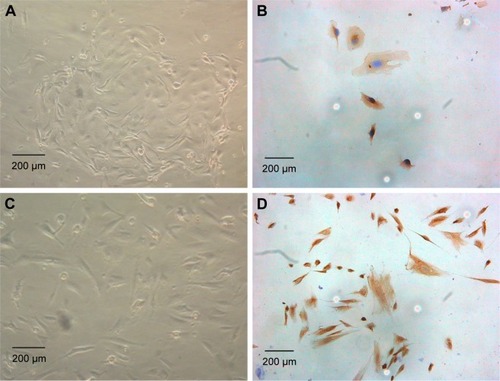
Figure 3 Different proliferation, migration and invasion abilities of four types of human endometrial cancer cell lines.
Abbreviation: HMGB1, high-mobility group box protein 1.
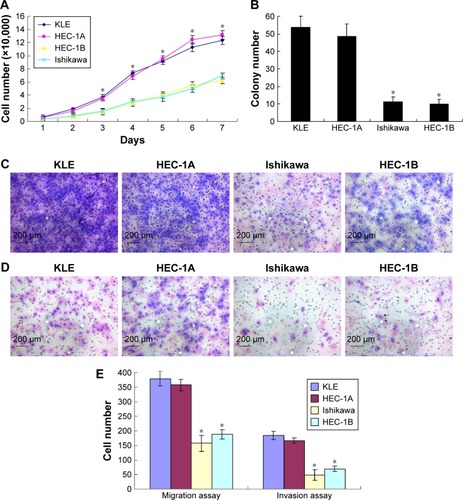
Figure 4 HMGB1 expressions in endometrial cancer cells and normal endometrial cells were assessed by ICC, Western blotting and RT-qPCR. HMGB1 expressions in endometrial cancer cell lines KLE, Ishikawa, HEC-1A, HEC-1B, and normal endometrial cell lines were measured by (A) ICC staining. (B) Western blotting. (C) RT-qPCR. The expression of HMGB1 was significantly strong in normal endometrial cells. Endometrial cancer cells such as KLE and HEC-1A, with the higher proliferation and invasion abilities, had lower expression of HMGB1, compared to Ishikawa and HEC-1B, which had the lower proliferation and invasion abilities (magnification 200×). *P<0.05.
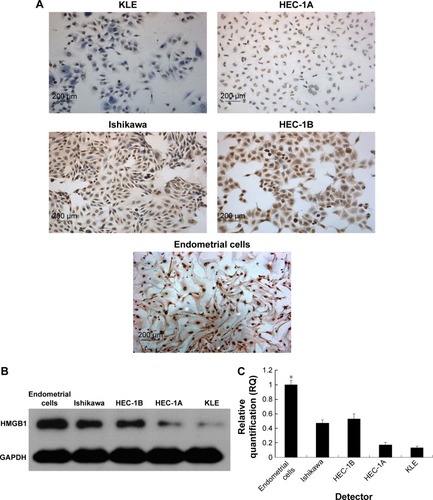
Figure 5 Effects of HMGB1 knockdown on the proliferation, migration and invasion abilities of the lowly invasive endometrial cancer cells Ishikawa and HEC-1B. HMGB1 protein expression in lentivirus-infected cells was measured by (A) Western blotting. (B) RT-qPCR. (C) HMGB1 knockdown increased the proliferation abilities of the less invasive endometrial cancer cells. (D) HMGB1 knockdown increased the colony-forming capacities of the less invasive endometrial cancer cells. (E) HMGB1 knockdown promoted the migration abilities of the less invasive endometrial cancer cells. (F) HMGB1 knockdown promoted the invasion abilities of the less invasive endometrial cancer cells. (G) The average migrating and invading cell counts of HMGB1 shRNA-infected cells were much higher than those of non-infected and negative control cells (magnification 200×). *P<0.05.
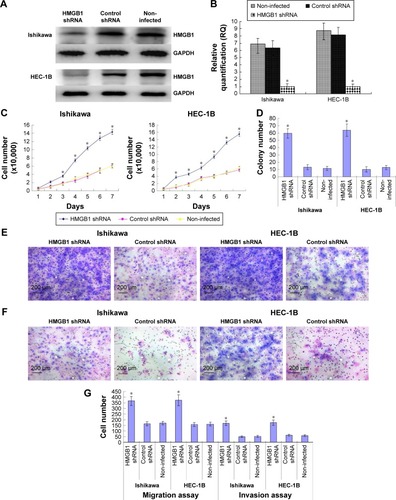
Figure 6 Effects of HMGB1 knockdown on tumor growth in vivo.
Abbreviations: H&E, hematoxylin and eosin; HMGB1, high-mobility group box protein 1; shRNA, small hairpin RNA.
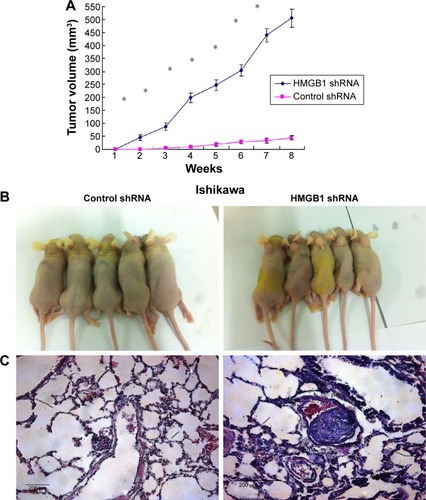
Figure 7 Effects of HMGB1 knockdown on EMT markers. After RNA interference, EMT markers, including E-cadherin, N-cadherin, vimentin, Snail and Twist, in the lentivirus-infected cells were measured by (A) Western blotting and (B) RT-qPCR. HMGB1 knockdown significantly increased the expression of N-cadherin, vimentin, Snail and Twist but decreased the expression of E-cadherin. (C) Compared to HMGB1 – high cell lines (Ishikawa, HEC-1B), HMGB1 – low cell lines (HEC-1A and KLE) showed lower expression of N-cadherin, vimentin, Snail and Twist and higher expression of E-cadherin. *P<0.05.
